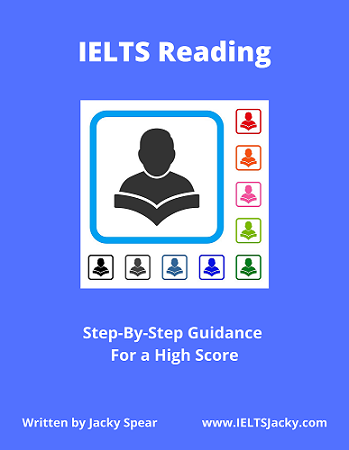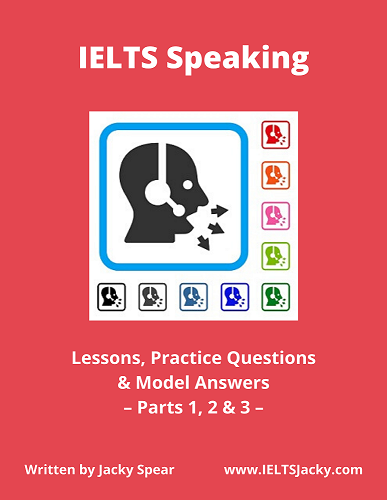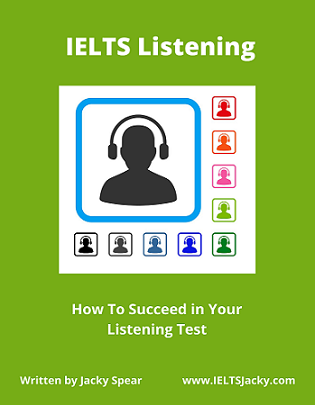IELTS Reading
Yes, No, Not Given Questions
Yes, No, Not Given questions are common in the
IELTS Reading test. There’s a good chance you’ll get one of these or a True/False/Not
Given question which is very similar.
It’s important that you understand the difference between the two so here’s a quick explanation.
Yes/No/Not Given vs True/False/Not Given questions
The difference is in the type of information contained in the text.
Yes/No/Not Given – the
text will contain the opinions, views or beliefs of the writer
or other people who are mentioned.
True/False/Not Given – the text will contain factual information about a topic.
Many students dread this type of question for the reason I’ll
explain in a minute. However, if you learn the tips and practice the strategy
on this page, your skill at answering them will improve, as will your
confidence.
Here’s what
we’ll be covering:
- Explanation
- The big challenge
- 8 Top tips
- Proven strategy
- Examples & model answers
Explanation
For Yes/No/Not Given questions, you will be given a set of statements and a text. Your task is to decide which of the following applies to the information in each statement:
- it agrees with the views of the writer – YES (Y)
- it disagrees with or contradicts what the writer thinks – NO (N)
- it is impossible to know what the writer’s point of view is – NOT GIVEN (NG)
Here’s a set of sample instructions & questions from a real past IELTS Reading test paper for illustration.
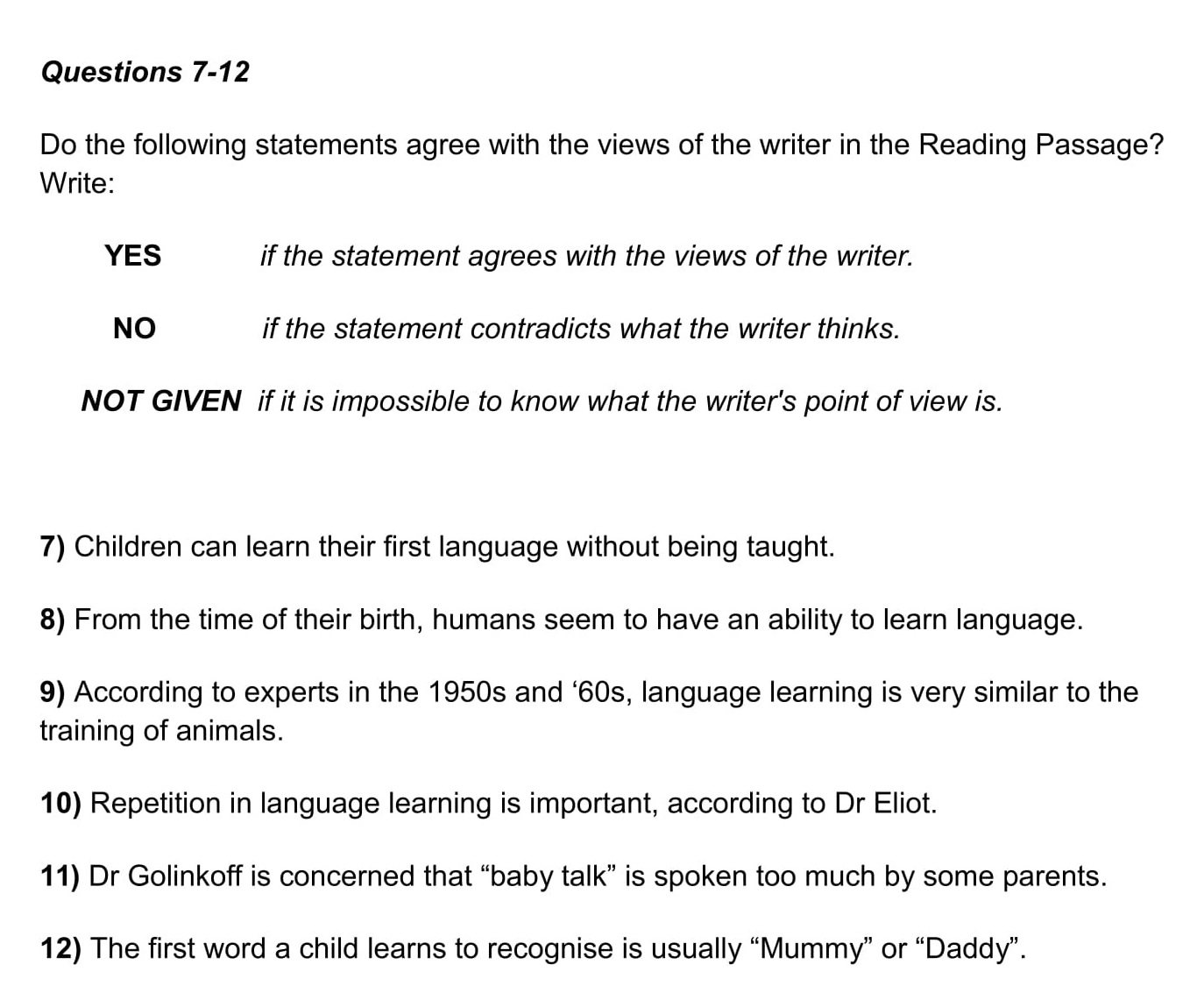
So, you need to do two things:
1) Understand the information in the statements.
2) Decide if it matches the information in the text (Yes), disagrees with it (No) or isn’t given (Not Given).
The big challenge
The challenge
with a Y/N/NG type question is that for some statements, the NOT GIVEN ones,
you will be searching for information that’s not there.
This is the first reason why some people fear it.
You can easily waste a lot of time going over and over the text to check that you haven’t missed the information.
The second challenge is the unfamiliarity of this type of question. Most people will have looked for YES & NO statements in texts back in their school days but many have no experience of NOT GIVEN statements.
Hence, it’s extra important to have a strategy that gives you the confidence to make your decision and move swiftly on.
8 Top tips
1) The answers appear in the same order in the text as the order of the statements.
2) You don’t need to read the whole text. First, you will scan for keywords and then you’ll read in detail the section in which they're located to find the answer.
3) There will be at least one of each answer type – Yes, No, Not Given. So, if you don’t have at least one of each when you’ve completed the question, you’ve made a mistake.
4) Watch out for distractors. Be aware that the test setters love to use ‘distractors’ to really test you. A prime example is qualifying words such as:
every a few
all always
some often
most occasionally
These single words can completely change the meaning of a sentence.
E.g. Julio often goes to the gym after work.
Julio occasionally goes to the gym after work.
In Y/N/NG questions, the meaning of the statement must be an exact match with the opinion of the writer for the answer to be YES.
5) Also be on
the lookout for qualifying words that express possibility or doubt such as:
seem claim
suggest possibly
believe probably
Again, they can totally alter the meaning of a statement.
E.g. He claimed that profits had gone up by 10%.
He knew that profits had gone up by 10%.
6) The view or opinion of the writer may not be immediately clear from the text. You may have to determine this through what they say.
7) The statements will contain synonyms and paraphrasing so be on the lookout for these.
8) Remember that at least one answer will be NG. This means that you will be searching for information that is not there.
As already mentioned, it’s easy to waste time searching and searching for information you’re never going to find because it isn’t there. Use the strategy I’m about to show you to quickly come to a decision about each statement and move on.
The Strategy
# 1 Read the instructions
carefully. Double-check whether it is a YES/NO/NOT GIVEN or a TRUE/FALSE/NOT
GIVEN question.
# 2 Read the statements and try to understand the meaning of each. Do this before reading the text.
# 3 Think about possible synonyms that might appear in the text and note any qualifying words in the statements such as, all, some, always, often. This will make your brain alerts for them when you scan the text.
# 4 Underline keywords. You won’t necessarily find the exact words in the text due to the extensive use of synonyms and paraphrasing in Y/N/NG questions but enough will be present to make doing this worthwhile.
# 5 Re-read statement 1 and scan the first paragraph, maybe two, for the key words or synonyms of them. Scanning will locate where the answer is but detailed reading of this section of the text is now needed to determine the opinion of the writer in relation to the statement.
# 6 Make your decision. Remember to consider these three things:
- To be YES, the view of the writer must exactly match the statement even if the words are different.
- Look carefully for qualifying words that might change the meaning.
- If you are struggling to find the writer’s opinion it’s probably because it isn’t there, i.e. it’s NOT GIVEN.
# 7
Repeat this process for the remaining questions.
Example with answers
Please note that this example is not from a real IELTS Reading test paper. I have created it myself to demonstrate the strategy I’ve just outlined and to give you an opportunity to practice it.
The text in your test will be longer and probably have 5 or 6 statements.
Follow steps 1-7 of the strategy and decide if the answer to
each statement is YES, NO or NOT GIVEN. Then read my notes below which contain
the answers.
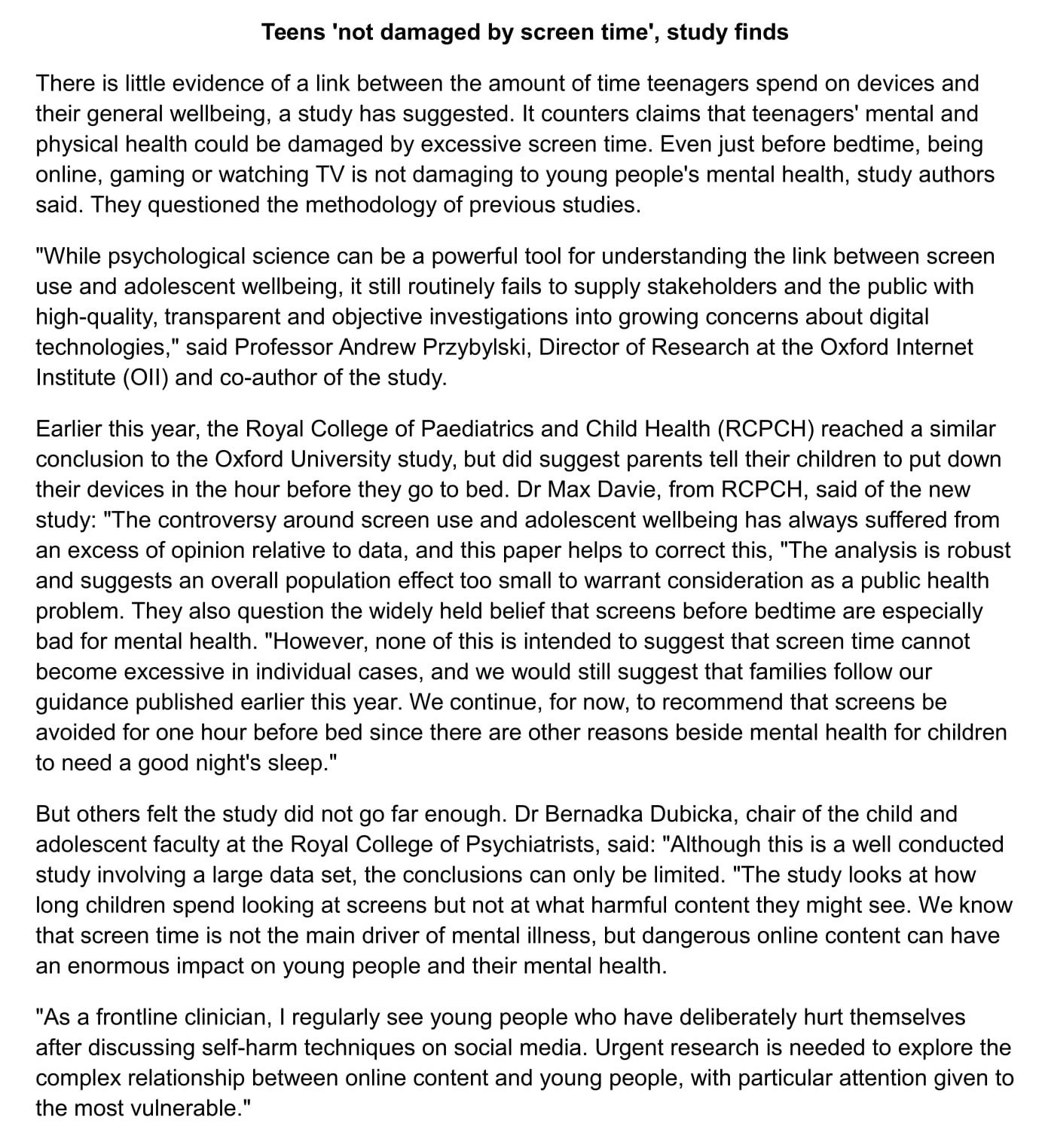
Source: BBC News website (Text edited for this practice exercise.)
Download the PDF of this text – Screentime
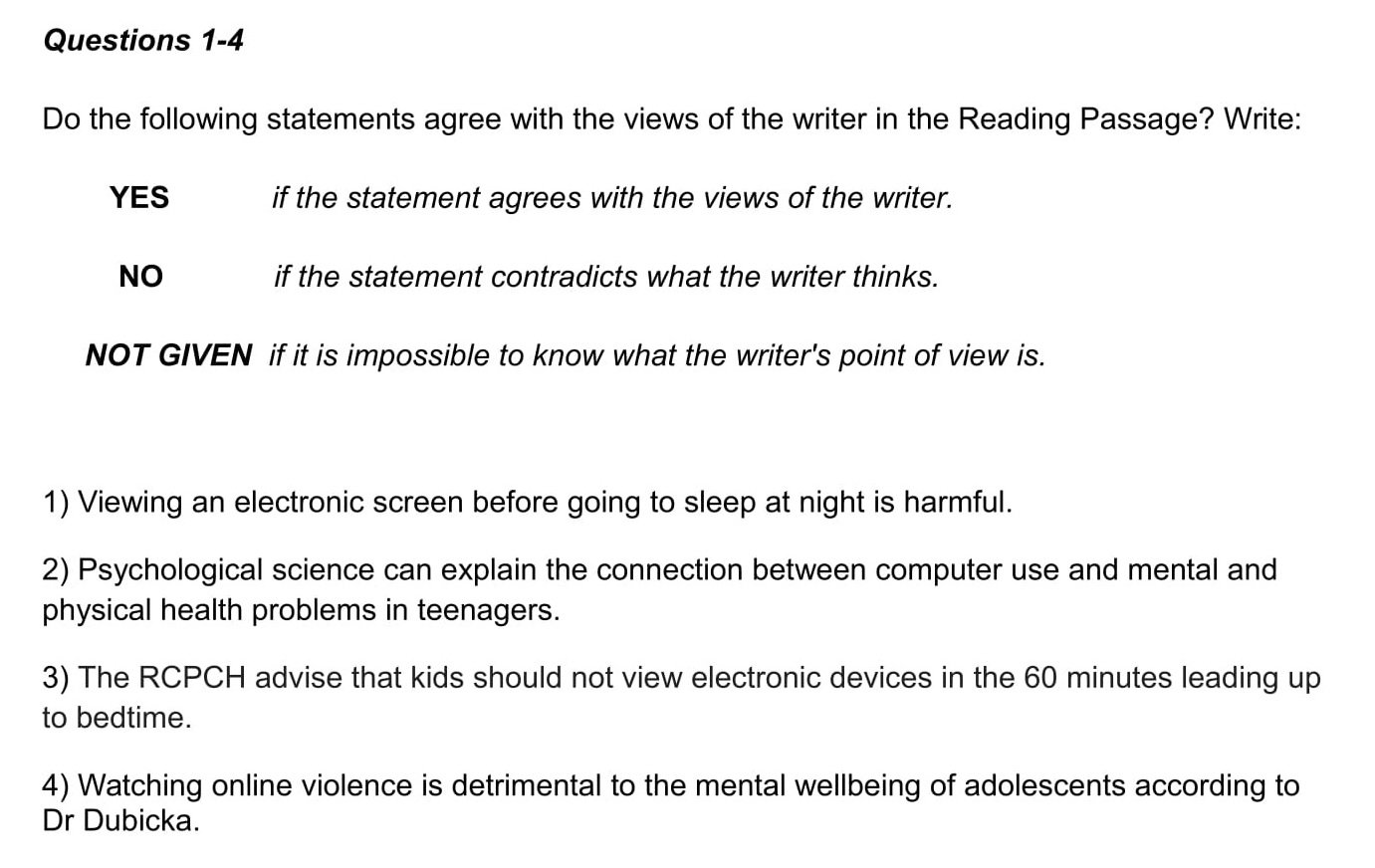
Download the PDF of these instructions – Screentime - Statements
Notes on how I answered
the questions
1) Having read the
instruction and tried to understand the meaning of the statements, I now focus
in on the first statement.
1. Viewing an electronic screen before going to sleep at night is harmful.
The keywords I select to scan for are screen and harmful although I’ll be looking out for synonyms as well.
I scan the first paragraph and easily find ‘screen’. ‘Harmful isn’t there but I do spot ‘damaging’ which is a synonym. This shows me that I’ve found the section of the text where the answer is located.
There is little evidence of a link between the amount of time teenagers spend on devices and their general wellbeing, a study has suggested. It counters claims that teenagers' mental and physical health could be damaged by excessive screen time. Even just before bedtime, being online, gaming or watching TV is not damaging to young people's mental health, study authors said. They questioned the methodology of previous studies.
I read the statement again to get more detail. ‘Before going to sleep at night’ is also an important phrase so I now scan for this. I don’t see it but ‘just before bedtime’ means more or less the same thing. This suggests that the answer is in this sentence. I now read it in detail.
The sentence clearly says that in the opinion of the authors of the study, viewing an electronic screen before going to sleep at night is not damaging. So, the answer is NO.
2) Next, I read the second statement and decide to scan for ‘psychological science’ and ‘computer’, again watching out for synonyms, especially for ‘computer’ for which there are several possibilities.
I continue scanning from the location of the last answer. Remember, the information will come in order in the text.
2. Psychological science can explain the connection between computer use and mental and physical health problems in teenagers.
‘Psychological science’ is at the beginning of the second
paragraph so this looks like the right section of the text for this answer. I
don’t find ‘computer’ but ‘screen use’ and ‘digital technologies’ are in the
same sentence. ‘Screen use’ is close enough to ‘computer use’, which is the
phrase used in the statement, for the information to be a match.
"While psychological science can be a powerful tool for understanding the link between screen use and adolescent wellbeing, it still routinely fails to supply stakeholders and the public with high-quality, transparent and objective investigations into growing concerns about digital technologies," said Professor Andrew Przybylski, Director of Research at the Oxford Internet Institute (OII) and co-author of the study.
I now scan the sentence for the word ‘teenagers’ to be sure I
have the correct location. I don’t see it but the synonym ‘adolescent’ is there.
Next, I read in detail for the answer. Once you know where it’s located, it can often be a single word that leads you to the answer. Here, it’s the word ‘fails’. Read in the context of the sentence, it tells me that psychological science fails to do what is stated in the statement. The answer must thus be NO.
3) Paragraph 3, where I expect to find the next answer, is a long one so I need to quickly find the section the answer is in to narrow down my search.
I decide to scan for ‘RCPCH’ to identify the correct paragraph and ’60 minutes’ to locate the detail in the statement.
3. The RCPCH advise that kids should not view electronic devices in the 60 minutes leading up to bedtime.
I easily spot ‘RCPCH’ so quickly scan on for my second keyword suspecting that a synonym might be used. I’m right and spot ‘one hour’ in the last sentence.
Earlier this year, the Royal College of Paediatrics and Child Health (RCPCH) reached a similar conclusion to the Oxford University study. Dr Max Davie, from RCPCH, said of the new study....
....We continue, for now, to recommend that screens be avoided for one hour before bed since there are other reasons beside mental health for children to need a good night's sleep."
I read the statement again and look for other words that match words in this sentence. These should confirm that I've found the sentence with the answer in.
I match ‘advise’ with the synonym ‘recommend’ and ‘electronic devices’ with ‘screens’.
‘Leading up to bedtime’ is also a match for ‘before bed’.
The text clearly agrees with the statement so I mark the answer YES.
4) It’s always helpful if there’s a name in the statement as it will be easy to spot in the text. There’s one in statement 4 so I immediately scan for it.
Do be aware that a name may not
match exactly. Just the last name might be used, an initial and the last name or
just the first name. Here, the first name has been omitted in the statement.
4. Watching online violence
is detrimental to the mental wellbeing of adolescents according to Dr Dubicka.
Having found the name and confirmed I have the right paragraph,
I then scan for the key word ‘violence’, or a synonym, as this is the subject
of the statement.
But others felt the study did not go far enough. Dr Bernadka Dubicka,
chair of the child and adolescent faculty at the Royal College of
Psychiatrists, said: "Although this is a well conducted study involving a
large data set, the conclusions can only be limited. “The study looks at how
long children spend looking at screens but not at what harmful content they might see. We know that screen time is
not the main driver of mental illness, but dangerous
online content can have an enormous impact on young people and their
mental health.
Whilst I do find ‘harmful content’ and ‘dangerous content’, which would include online violence, I find no specific reference to ‘violence’. I thus conclude that the answer is NOT GIVEN.
Answers
1 NO
2 NO
3 YES
4 NOT GIVEN
Want to watch the video of this page? Click here.
I hope you’ve found this page helpful. You are now ready to practice this strategy with past test papers. Once you get the hang of answering Y/N/NG questions, you’ll be able to tackle them with confidence in your IELTS Reading test.
Like this page?
Lessons On All Question Types
For more sample questions with step-by-step instructions, see the IELTS Reading menu page.
More Reading Test Pages
IELTS Reading Test – Understand the format, question types & marking system & know what skills are assessed. Also learn success strategies, key reading skills & discover top tips.
IELTS Reading Skills – Master the skills of skimming, scanning & detailed reading. Understand the importance of topic sentences & how to use context for meaning & unfamiliar words.
Top 7 IELTS Reading Tips – Each tip will take you a step closer to the high score you want. They are the key to top marks in your test.
9 More Tips For IELTS Reading – Learn valuable practice techniques & discover a secret that may gain you extra marks.
IELTS Reading Practice – Discover the top 5 things you must do to prepare for your reading test.
How to Complete the IELTS Reading Test in 60 Minutes – Top 6 Recommendations.
IELTS Academic Reading – Why you should take IELTS Academic Reading, test format, text types &
sample tests.
IELTS General Reading – Why you should take IELTS General Reading, test format, text types & sample tests.
Reading Practice Samples – Short activities to improve your reading skills & help you learn topic vocabulary.



